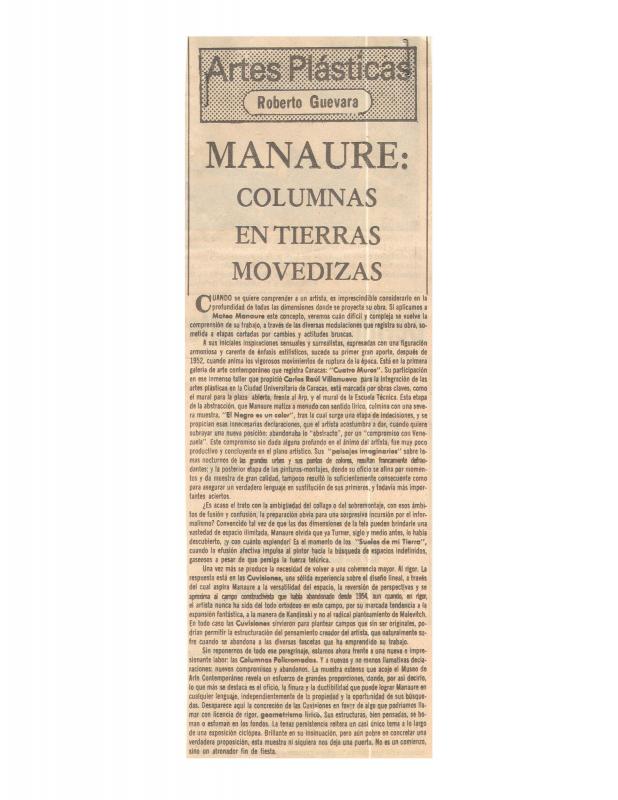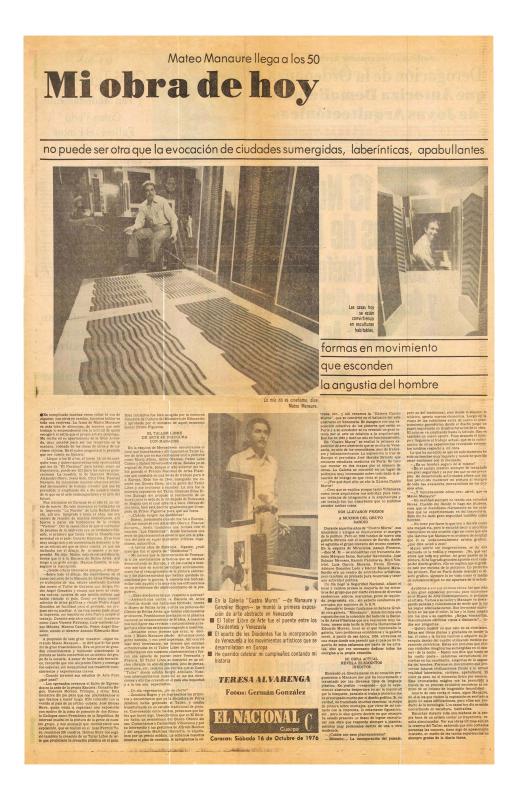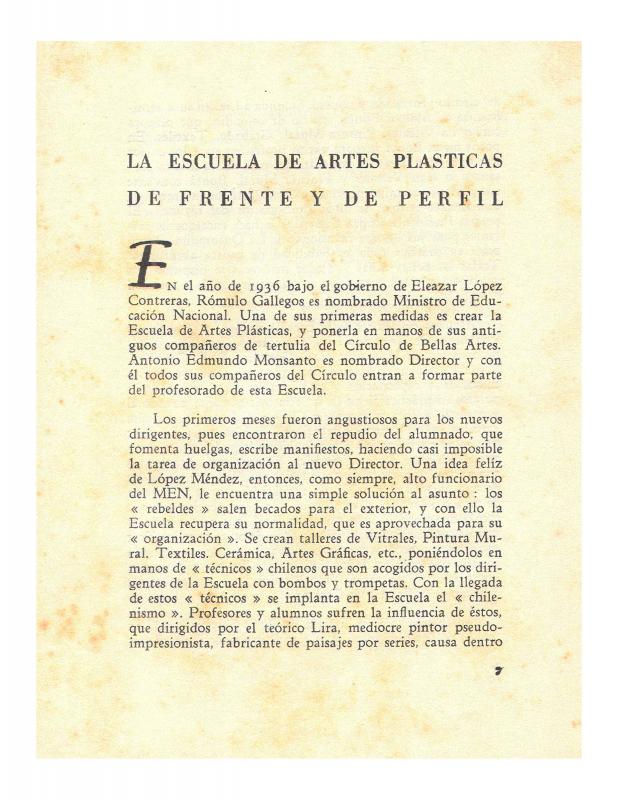In this essay, the Venezuelan critic Víctor Guédez reflects on how artistic sensibility can provide consistency in a career marked by dissimilar phases. In the specific case of the painter Mateo Manaure (b. 1926), the emotional quality of his own nature and his approach to different artistic languages provides continuity between his various creative periods, as he moves from Abstraction to Figuration, experimenting with Surrealism, photo montage, and objectual art. Guédez highlights the artist’s position and sensibility in both his creative process and his psychological universe. After a decade in which many artists defended (on behalf of particular causes or ideas) their option to use specific artistic languages, Guédez reinstates the validity of “feeling” as a support in the quest for and execution of aesthetic works. He also discusses the viability of change as an expression of loyalty to one’s own creative needs, thereby distancing himself from classifications based on styles or aesthetic positions. At the exhibition Mirar a América (Galería Cuatro Muros, Caracas, 1981), a year before this article was published, Manaure made it abundantly clear that he was finished with Abstraction by exhibiting his collection of Figurative works in which he explored a concept of identity based on the racial and ethnic roots of the Americas. Guédez also systematizes, to some extent, the opinions that were common to all criticism of Manaure’s work; that is, his profoundly emotional nature and, therefore, his preference for lyrical solutions, even in his analytical works such as those he produced during his Abstract period.
For more information about Mateo Manaure and his work, see the articles by Roberto Guevara “Manaure y la inmensa noche” [doc. no. 1156411], “Manaure: Columnas en tierras movedizas” [doc. no. 1155515], and “Manaure y las Cuvisiones” [doc. no. 1156459]; the essay by Perán Erminy “Las imágenes poéticas de Manaure” [doc. no. 1156523]; the essay by Alfredo Boulton “Mateo Manaure en el Museo de Bellas Artes” [doc. no. 1157497]; the essay by Gastón Diehl “Mateo Manaure” [doc. no. 1156491]; the article by Teresa Alvarenga “Mi obra de hoy: Mateo Manaure llega a los 50 años” [doc. no. 1156427]; the article by Pedro Lhaya “Mateo Manaure o la autenticidad pictórica americana” [doc. no. 1156443]; and the document in which Manaure outlines his critical views concerning the history of “La escuela de artes plásticas de frente y de perfil” [doc. no. 813569].









